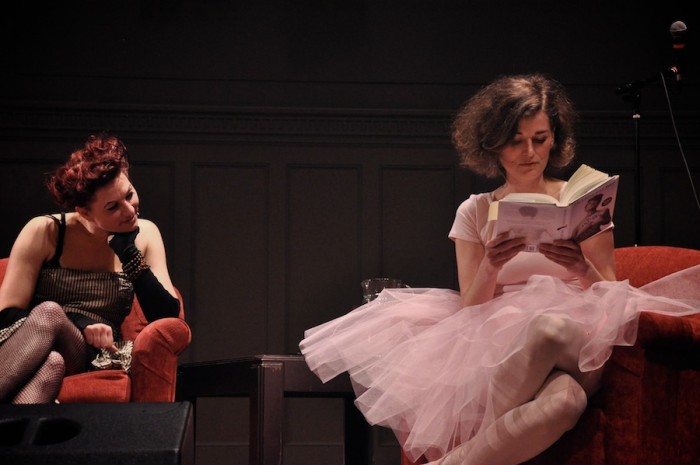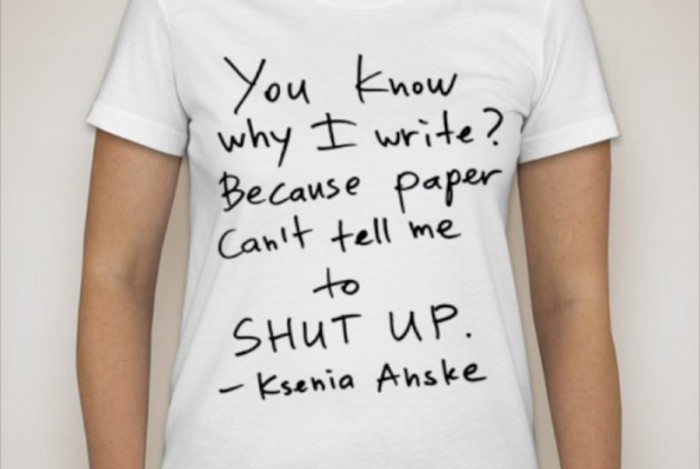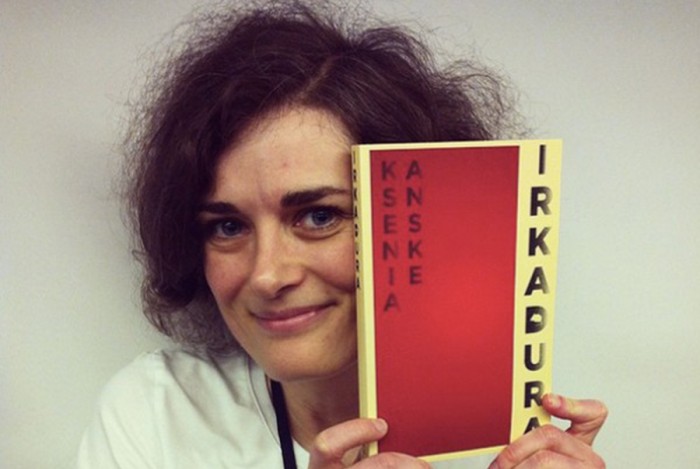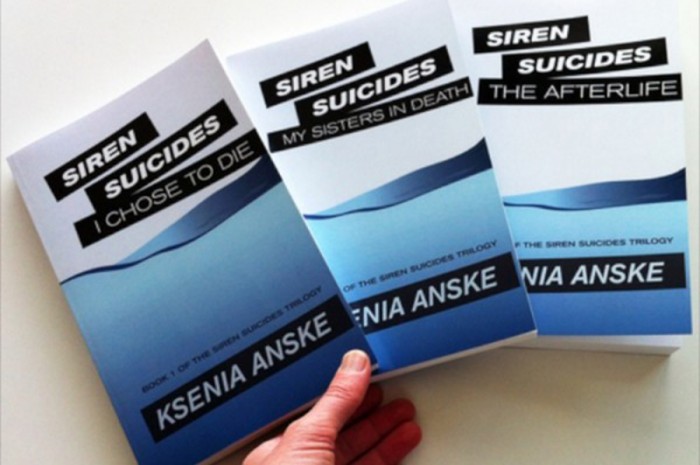
Ksenia Anske seems to have a respectable mantra for everything.
On keeping up with the dying book industry: “Just give it out for free.”
On accepting praise: “Take the f*cking donut.”
On children’s books: “Adults should read them, too!”
On the digital age: “What’s everyone so stressed out about?”
Most importantly, when life hands you lemons, write fantasy novels.
Anske is a Russian expatriate architecture student who went on to become a successful fantasy writer (not before taking a piece of the Seattle startup scene pie), so she hasn’t exactly followed the straight and narrow.
She immigrated to the U.S. in 1998, like many before her, to accompany her then-husband to start a job at Microsoft. Without a car, trudging up the sidewalk-less streets of Redmond with a backpack to get groceries through 90 days of rain, Seattle made even a bleak Moscow winter seem idyllic.
“I was like, ‘What is this place? There’s nobody outside in the streets!’” she recalled.

Anske eventually found her way across the bridge and her sense of place. She learned English, earned her bachelor’s degree, started her own business, got a car, and then sold it. On Saturday she posted a photo of herself riding the bus reading Pushkin — in English.
She had arrived.
That hard-earned rootedness will send Anske on a whirlwind train trip this spring to Chicago and back, to write a book. In September, Amtrak announced that she was of two local winners of the first ever Amtrak Writers Residency. The residency, which sounds exactly like what it is, was inspired by a retweeted interview with writer Alexander Chee, who cheekily suggested a program for writers like himself who got their best work done while riding the rails. It saw more than 16,000 applications in its first year for 24 spots. Those odds are harder than getting into Harvard.
Though Anske still seemed giddy about her win, it comes as no surprise. In addition to being named one of the Top 100 Women in Seattle Tech by Puget Sound Business Journal and winning the UW Business Plan Competition in the “best idea” category for her startup, Lilipip, she’s the author of six publish fantasy and flash fiction books that can be downloaded for free or by donation. And with a growing readership stretching across the globe, it’s no wonder her book “Rosehead” has been read over 120,000 times.
Anske’s renegade style and dark, funny, genre-defying stories (“weird shit,” she calls it) added to the mish-mash of residency candidates, ranging from former CIA officers, to historians, to novelists.
According to the Amtrak blog, criteria for the residency relied not only on application materials, but “the extensiveness of their social community and ability to reach online audiences with content.”
Anske, who posts bi-weekly on her own blog, is now fully supported by the donations and sales from her online readers.
“I love [social media],” she shared. “Nothing changed, we just have the tools now to do what we always did. It’s people’s way of connecting.”
Online, Anske isn’t afraid of intimacy between herself and her nearly 57,000 Twitter followers, with whom she shares everything from life advice to the experience of eating the perfect bagel. Her fans helped pitch in for her daughter — a college student who designs Anske’s book covers — to buy new art supplies after posting about her being robbed.
Much like herself, Anske’s readers cannot be pegged as this or that.

Nearly half of her son’s class has read “Rosehead” — they’re eleven. Readers write her from India, Russia and New Zealand. They are simply, as she describes it, “people who love weird, odd, stuff that’s slightly on the edge.”
Anske wasn’t always a writer with a robust internet following. After being unable to transfer credits from her architecture degree in Russia, she brought her portfolio full of drawings to Cornish College of the Arts, where she was accepted for a degree in design.
While her son was young, she began making cartoon videos to teach him Russian. Others began asking for videos, explaining languages and other concepts, in the digestible, playful and quirky style that is decidedly hers. An avid reader, she devoured books about social media and marketing, and soon gained financial investors. Freelance “how-to” videos turned into a startup, attracting the attention of clients like Zappos.com and Microsoft.
After several years of enjoying the expansion of her business and recognition for it, Anske’s childhood trauma resurfaced, leaving her immobilized and unable to work. Her career came to a halt. In 2010, she left Lilipip.
“I just fell out of my life,” she said.
When her thoughts moved to suicide, her therapist encouraged her to journal. Meanwhile, she managed to work in the social media marketing industry for another two years, allowing her to accumulate some savings that would allow her to pursue writing full-time.
Soon, “Siren Suicides,” Anske’s first book, was born. The 2013 trilogy, divided into three parts — “I Choose to Die,” “My Sisters in Death” and “The Afterlife” — served as an enchanting processing of her own experience, striking a chord with online readers.

In her mind, there was no question about giving out her books for free.
“I thought, ‘If it were not for this story, I would be dead,'” she said. “I was just so grateful for anybody to read it, to even be alive.”
More stories followed. As readership grew, people asked whether the next one would be free, too.
As her savings dwindled, Anske continued writing and struggling to keep up financially. Some writers wrote her angrily, claiming she was devaluing their craft by giving it away for free. She didn’t budge.
“This is just how I see it,” she told me. “This is my way of giving love to people, and they give it back”.
And they did.
As readership grew, Anske eventually began asking for donations for sale of her books, especially signed paperbacks. Readers, she said, would come in and read a book or two for free, and later on, choose to donate or buy a signed copy.
She now makes her entire income writing — 60 percent of it in donations, and 4o percent from sales.
Earlier this month, she spoke to a sold-out room at Town Hall with musician Amanda Palmer (who crowd-sourced the entire funding for her latest album). The evening was aptly titled, “The Art of Asking.”
Despite all this, Anske said she never imagined she’d become a professional writer.
“Someone had to hit me on the head with a pillow saying, ‘Hey! You’re a storyteller.’”
In March, she will set out for two weeks on a train from Seattle to Chicago through Los Angeles. The journey is the penthouse suite of writing — solitude, natural beauty and someone else picking up the bill.
She’s already begun sketches of a story, about — what else? — a Russian troupe of traveling ballerinas eaten one-by-one by a flesh-eating train car.
For all her asking, it’s a not a bad thing to receive.
This post has been updated since its original publication.


Thank you for writing this fantastic article about me! I’m very excited about my Amtrak trip. XOXO